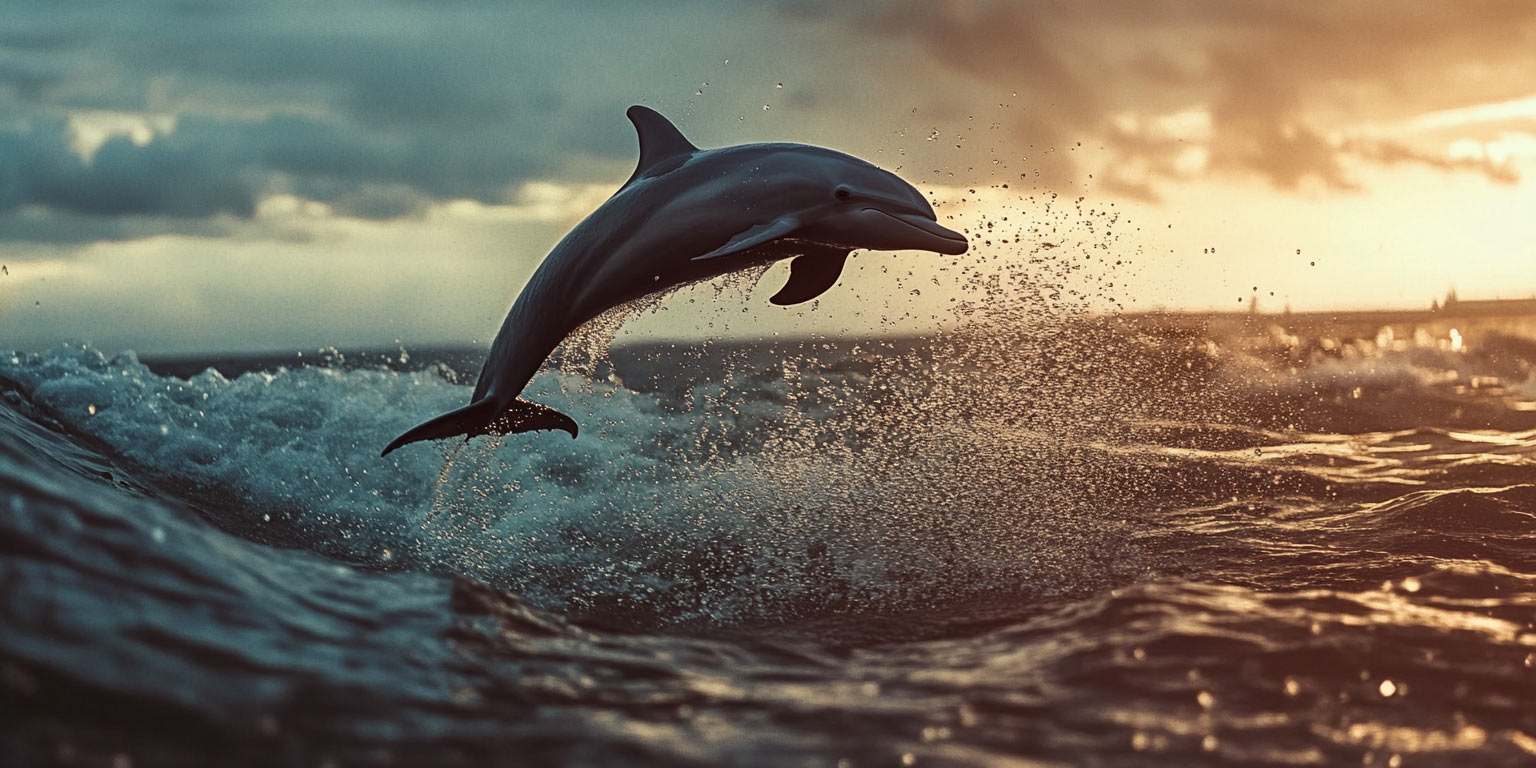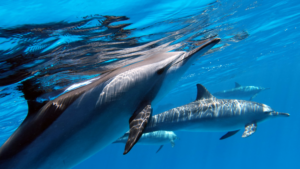Dolphins are some of the most exciting animals to watch in the ocean. Whether they’re jumping, spinning, or sending up a fountain of water from their blowhole, their behavior always catches attention. But why do they do these things?
Jumping out of the water and blowing out air at the surface may look playful, but there are real reasons behind these actions. In this blog, we’ll look into the science and meaning of dolphin jumps, what that splash of water from their blowhole really means, and how to spot signs of emotion like boredom or sadness in these highly intelligent creatures.
Why Do Dolphins Jump Out of the Water?
There are many reasons a dolphin might leap out of the ocean. While it might seem like they’re just showing off, jumping is actually a very smart and useful behavior.
Dolphins Jump to:
- Travel faster by leaping through the air with less drag than swimming underwater
- See what’s around them, including food, boats, or other animals
- Shake off parasites or barnacles from their skin
- Communicate with other dolphins using splashes
- Play and enjoy themselves, especially young dolphins learning new skills
Dolphins are fast swimmers, and jumping helps them save energy by moving through the air instead of pushing through water. It’s also a way to scan their surroundings, send signals, or even just have fun.
Why Do Dolphins Spout Water at the Surface?
When you see a dolphin shoot water into the air at the surface, it’s not actually spitting water. It’s breathing.
Dolphins breathe through a blowhole on the top of their heads, and when they surface, they forcefully exhale air, often mixed with moisture or mist.
Key facts about the blowhole spray:
- It’s mostly warm air, not a fountain of water
- The spray may look like a splash because it mixes with ocean mist
- It’s normal and healthy, not a sign of stress or sickness
- Dolphins may release louder or stronger spouts when surfacing quickly or excitedly
Unlike fish, dolphins are mammals, which means they need air to survive. Every few minutes, they come up for a quick breath, and the blowhole clears out old air in a burst.
What Do Dolphins Do When They Are Bored?
Just like humans, dolphins can get bored, especially in environments where there’s not much to do. Dolphins are smart, active, and curious. If they don’t have enough challenges or social interaction, they may show signs of boredom.
Signs of boredom in dolphins:
- Repeating the same motions with no purpose
- Pacing or circling in tight areas
- Ignoring toys or trainers, especially in captivity
- Floating still for long periods, unless resting
In the wild, boredom is less common because dolphins are busy hunting, traveling, and interacting with their pod. But in captivity, keeping dolphins mentally active is a big part of their care.
How to Tell if a Dolphin Is Sad
Though dolphins don’t cry like humans, they do show emotion in other ways. Researchers and trainers have studied dolphin behavior and found clues that suggest sadness or distress.
Possible signs of sadness in dolphins:
- Lack of interest in food or other dolphins
- Unusual quietness, since dolphins usually communicate often
- Staying away from their group or floating alone
- Low energy or slow movements
Sadness in dolphins can come from loneliness, illness, or stress. These animals are social by nature. If they’re separated from their pod, they can feel emotional loss, much like humans do.
Behind the Splash: What Dolphin Behavior Is Really Telling Us
Dolphins might look like they’re just playing when they jump or spray water, but there’s often more going on beneath the surface. From smart survival moves to emotional signals, their behavior tells us a lot. By paying close attention to how dolphins move, interact, and respond to their environment, we get a deeper look into the lives of one of the ocean’s most intelligent animals.











